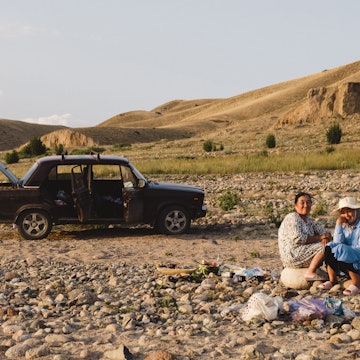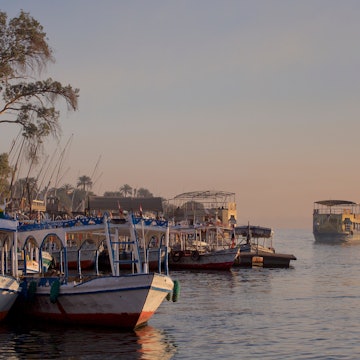
Taking your drone on vacation? Here's what you need to know in 2022


Drones help you see the world from a new angle © Luka Svetic / EyeEm / Getty
No longer just a tool for licensed professionals or a hobby for the wealthy, high-quality drones are now sold at most electronics stores and can be more affordable than a camera without the wings.
Though, as drone photography reaches new heights (pun intended), so do reports of incidents from amateur drone pilots wreaking havoc.
Beyond the slick appeal of game-changing photography, don't take off on your next trip with a drone until you have a masterful understanding of the red tape, compliance concerns and aviation guidelines in place to ensure safety is the priority.
So before you throw your drone (not your caution) to the wind, use this guide to get you cleared for take-off.

How to travel with your drone: What is TSA's drone policy?
TSA's drone policy mostly defers to individual airlines' guidelines when it comes to traveling with drones in-cabin or storing them in checked luggage. TSA's primary concern is with your drone's battery: lithium batteries, fuel cells and components of certain parachute systems may be prohibited in baggage.
Given that most commercial drones are now relatively small in size, once you've checked your airline's policies, you're likely able to pack it in your carry-on or your checked luggage when flying. Larger specialist drones or higher-end ones may be outside the dimensions for carry-on, especially when in their protective cases.
Keeping expensive equipment in a carry-on case is good practice, as you have more control of how it's handled. Likewise, always pack batteries in a carry-on bag, so they can be stored in a pressurized environment where the temperature is less likely to fluctuate. Most commercial drone batteries have less than 100 Wh (watt-hours), but it’s good to check against the airline’s rules just in case.
Look at the airport security practices for any country you're transiting through. When traveling with your drone through customs be aware that laws vary from country to country, and some places outright ban drones (more on that below). If you’re traveling through security to a country with strict drone laws, it goes without saying you should leave it at home for that particular trip. You could be risking fines or confiscation.
Can you carry a drone on an international flight? Drone regulations around the world
As unmanned aerial vehicles (UAVs) become more commonly used, policymakers are struggling to keep up. While many countries have established laws when it comes to drones, others do not. Regulations can vary, including the maximum height to which aircraft are able to fly to, the areas they are permitted, the distance they can go to buildings and whether or not identity tags are necessary. In the vast majority of cases, UAVs should only be flown while they are still visible to the pilot.

Where to keep up to date on drone laws and regulations
Leading drone manufacturer DJI has a handy link on their website to local drone laws listed by country which they keep updated regularly. The Global Drone Regulations Database also has a search function that shows recent updates. In the United States, authorities allow tourists to fly drones under the Federal Aviation Administration.
The most important guideline to remember: never fly a drone within a 5-mile radius of any airport.
Always research flight clearance at your intended flight destination before you arrive as rules and ordinances can vary by city and state, and change often.

The 3 best apps for drones: a map, a forecast and a photo wizard
B4UFly: An FAA-sponsored app for recreational drone pilots that documents where you can and cannot fly in the US. This resource is also the most comprehensive compilation of all airports in the US. The app also provides air clearance options via a text message system depending on your location.
UAV Forecast: A real-time log of local weather conditions that aid in gauging the wind, visibility and precipitation.
PhotoPills: Once you're in the clear and ready to fly, PhotoPills is an incredible resource for lining up the perfect shot.
Take a virtual drone tour of the fascinating new excavations in Pompeii
Why your drone's weight matters
Drones over 0.55 lbs (0.25 kg) should be registered on the FAA website, which also has further information available on policy and use. A flying limit of 400 feet high is in place, while pilots should avoid dangerous areas and refrain from flying over crowds. Beginners should consider a compact drone under 0.55 lbs (0.25 kg) to streamline the process of getting into the air.
Canada has a strict height limit of 295 feet (90 meters), while those operating drones should stay at least five kilometers away from airports, airfields and aircrafts. Further information on the specifics is available through Transport Canada. Italian authorities allow drones compliant with Italian Civil Aviation Authority (ENAC) regulations, as long as they are not flown at night, over populated areas or over a height of 229 feet (70 meters), while in Japan drones must keep a minimum distance of 100 feet (30 meters) from people, buildings and vehicles and only fly at a maximum height of 492 feet (150 meters).
Underwater photography contest captures astonishing scenes of animal behavior

Can you fly drones in US national parks?
Drones are not allowed for recreational or commercial use in US national parks or US national forests. In general, US state parks allow drones unless prohibited through a posted order.
How to photograph Yosemite like Ansel Adams
Be aware of no-drone zones
While countries have varying rules on things like height and location, some places have outright banned the use of drones. These include:
Algeria
Cuba
Morocco
Nicaragua
North Korea

Other countries have very strict or unclear drone regulations and thus, flying is definitely not recommended until policies become clearer. They include:
Barbados
Côte d'Ivoire
Eygpt
Iran
Iraq
Kuwait
Kyrgyzstan
Madagascar
Saudi Arabia
Senegal
Syria

Best practices for using your drone on vacation
Many official rules and regulations for the piloting of drones cross over with practical tips that will keep you and your equipment safe. As a general rule it’s always good to have your aircraft in sight, as it can become damaged or even crash. Wildlife and nature should always be taken into account, and it’s good to research if there are any endangered or protected species in the area.
Privacy is another big factor that should be considered, as drones can grant access to hard-to-reach areas that may have been designed to be free from prying eyes. As a courtesy, other people’s personal space in apartments and buildings and in public areas such as beaches should be taken into account. You also should never fly your drone near any military base, any government property or private property. Just because there's a wide-open, remote patch of land does not automatically mean you are free to fly. You are responsible for ensuring proper flight licenses and clearances at all times.
Recreational drone use is just that: recreational. Once you begin to use your drone skills for profit, you are a professional and need to obtain the proper clearances, licenses and approvals necessary. As previously mentioned, always maintain at least 5 miles distance from airports must be observed, as drones can cause many issues with air traffic.
After all that, there’s nothing left to do except get creative and have fun with your drone!
Step up your Instagram game with these 10 travel photography tips
You might also like:
Best national parks in the US for outdoor photography this summer
Step up your Instagram game with these 10 travel photography tips
Lonely Planet’s guide to the art of photography













